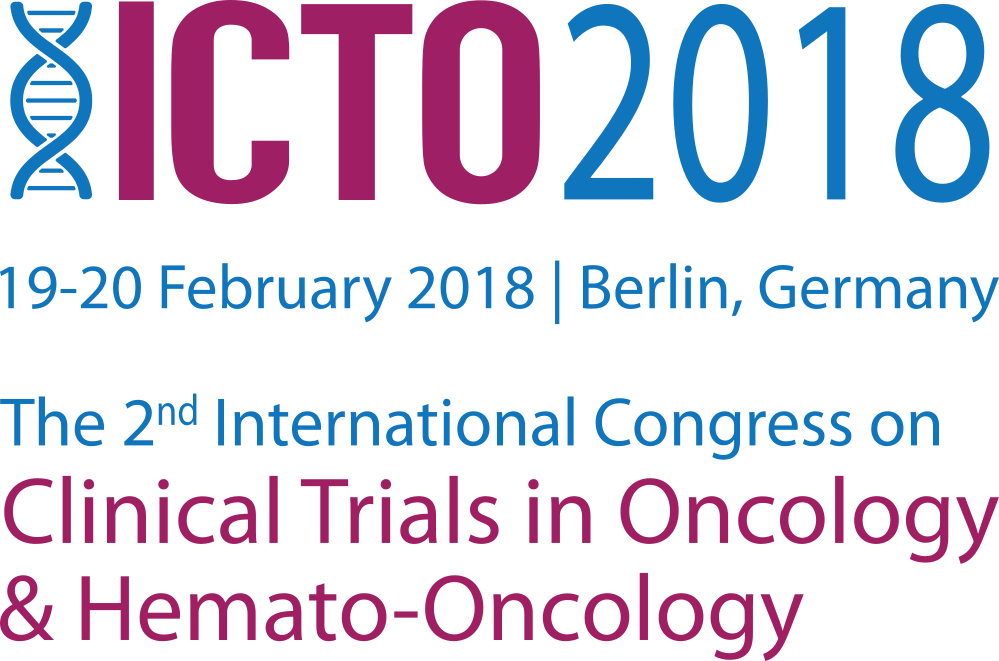ICTO2018: Phase Ib of Savolitinib and Durvalumab in Renal Cell Carcinoma (CALYPSO)
 A Phase Ib Study of Durvalumab (MEDI4736) in Combination with Savolitinib in Patients with Metastatic Renal Cell Carcinoma
A Phase Ib Study of Durvalumab (MEDI4736) in Combination with Savolitinib in Patients with Metastatic Renal Cell Carcinoma
S Vari1, B Szabados1, A GomezdeLiano1, K Mousa2, L Rammazzo2, A Prendergast2, T Powles1
2 Central Coordination Centre for Experimental Cancer Medicine, Barts Cancer Institute, Queen Mary University of London, UK
Background:
Anti-PD-L1 and CTLA-4 antibodies are associated with clinical benefit in mRCC. MET dysregulation plays an important role in papillary RCC pathogenesis and is a mechanism of resistance against TKIs in ccRCC. Pre-clinical data suggests benefit in dual MET plus PD-L1 inhibition. The phase Ib part of this trial was designed to determine the RP2D of savolitinib (c-Met kinase inhibitor) and durvalumab (PD-L1 mAb) when given in combination (NCT028195996).
Methods:
International, investigator led phase Ib/IIa study with a dose de-escalation (3+3) part in patients with metastatic renal cell cancer (irrespective of PD-L1 and MET alteration status). Dose level 0 (600mg OD savolitinib and 1500mg Q4wk durvalumab) and -1A (400mg OD savolitinib and 1500mg Q4wk durvalumab) were investigated. Patients received a 28 day cycle of savolitinib before commencing durvalumab treatment on day 1 of cycle 2. Treatment given until PD (RECIST v1.1) or intolerable toxicity. Primary endpoint was DLTs over a 2 month period. Secondary endpoints included PK and safety (CTCAE v4.03).
Results:
6 evaluable patients enrolled at dose level 0 with no reported DLTs. Median age 46 years (25-59), median ECOG 1. ccRCC (n=4), papillary cell (n=2). All 6 patients had Intermediate Heng risk score. 3 ccRCC patients had 3 previous lines of therapy and 1 ccRCC received 1 prior therapy. 1 papillary cell patient entered with no prior lines of therapy and 1 received 4 prior lines. Worst reported toxicity related to IMP was fatigue G2-3 (n=2). Other toxicities: G1-2 pain (n=3), G2 Caugh (n=1), G2 diarrhoea (n=1), G1 gastritis (n=1), G1 nausea (n=2), G2 Peripheral edema (n=2), Rash G2 (n=1), G1 transaminitis (n=1), PPE G2 (n=1). Two AESIs were reported, gastritis G1 and G3 numbness. At 12 weeks best response by RECIST v1.1 was SD (n=4).
Conclusions:
Based on DLTs and cumulative toxicity, dose level 0 was selected as the RP2D for the expansion phase. Dose level -1A was not investigated. Adverse events were in keeping with established single agent safety profiles. The expansion phase is open to recruitment in the UK and Spain and is investigating two cohort populations. mccRCC or sarcomatoid RCC patients (n=156) randomised (1:1:1:1) to savolitinib alone, durvalumab alone, savolitinib plus durvalumab or tremelimumab and durvalumab followed by durvalumab alone. Metastatic papillary patients (n=39) receive durvalumab plus savolitinib. A biomarker enrichment phase in tumours positive for MET or PD-L1 alterations may be investigated.